A Private Tour today. We had postponed from yesterday, because it was forecast to be very windy and the forecast (unusually!) was right. The weather was much better today – bright and sunny, with much lighter winds. We spent the day on the North Norfolk coast.
Our first destination was Cley. As we got out of the minibus in the car park, a Skylark was singing over the field behind. We walked over the road and round to Bishop Hide. There were some impressive numbers of waders on Pat’s Pool – at least 70 Avocet and over 50 Black-tailed Godwits were gathered around the islands (including one of the latter bearing a set of colour rings). There were a couple of Ruff too, one darker, already more advanced in its moult to breeding plumage. Several Common Snipe were skulking in the grass around the closest island.
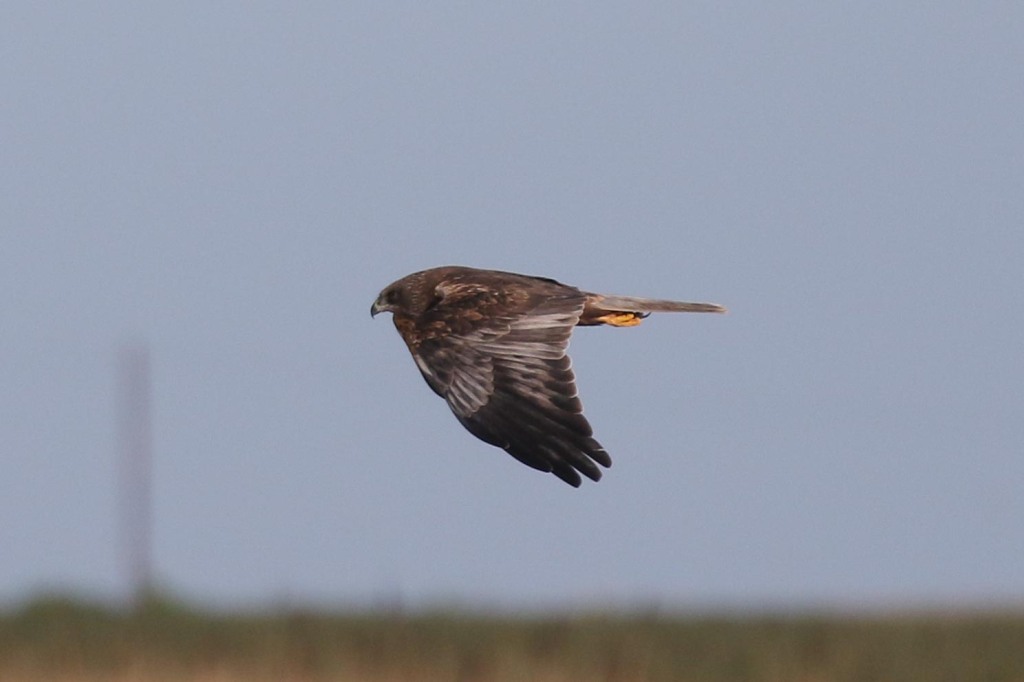
There was a nice selection of ducks too – Shelduck, Shoveler, Wigeon and Teal. We couldn’t find the pair Garganey at first, as they were asleep in the grass over the far side in front of Teal Hide, but we got the scope on them when they woke up. Just at that moment, one of the Marsh Harriers decided to drift over the scrape and flushed everything, but when things settled down the Garganey were now on one of the further islands. We had a good view of them through the scopes, of a little distant, before they settled down and went back to sleep.
The pair of Little Grebes were showing very well in the ditch right in front of the hide. They have been chasing off any visiting ducks and the Garganey may have been a lot closer but for their attentions! We heard Bearded Tits calling in the reeds but they didn’t appear. A pair of Lesser Black-backed Gulls flew in with an egg which they proceeded to eat on one of the islands.
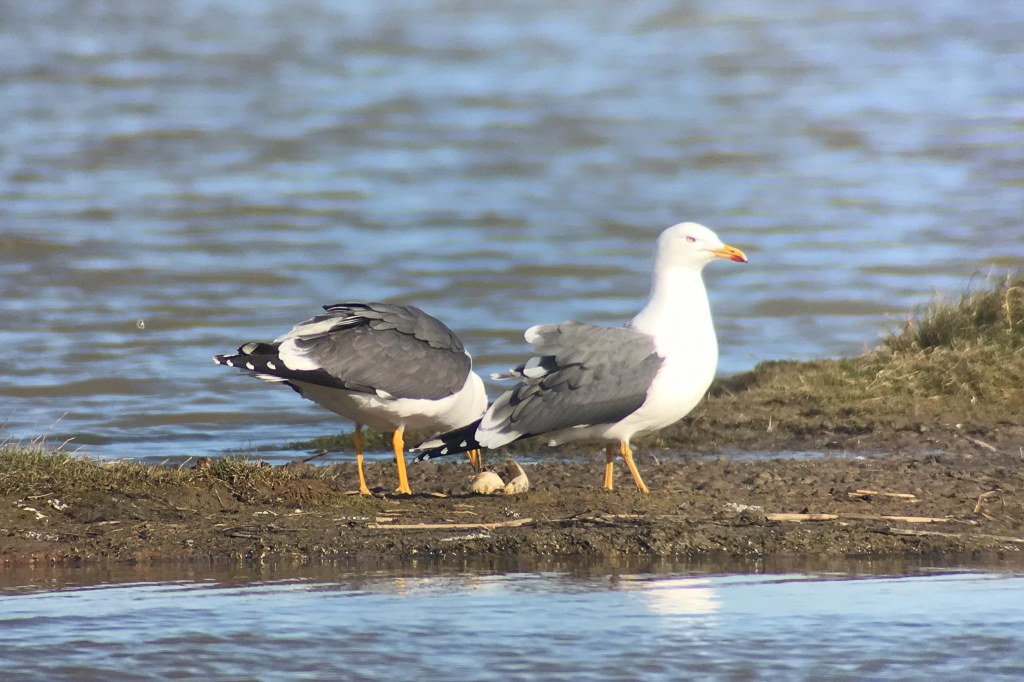
As we walked on down towards the East Bank, a Chiffchaff was singing across the road and a Blackcap was singing on the corner by Snipe’s Marsh, early spring migrants back already.
We were about to set off up the East Bank, but we stopped to have a quick scan of the catchwater drain. There has been another pair of Garganey here – it has been a good spring for them, with at least 3 pairs around the reserve in recent days. We couldn’t see anything at first, but before we walked on we heard the distinctive croaking call of the male and turned round to see a pair swimming towards us. They were really close and we had fantastic views of them now before they disappeared into the reeds.
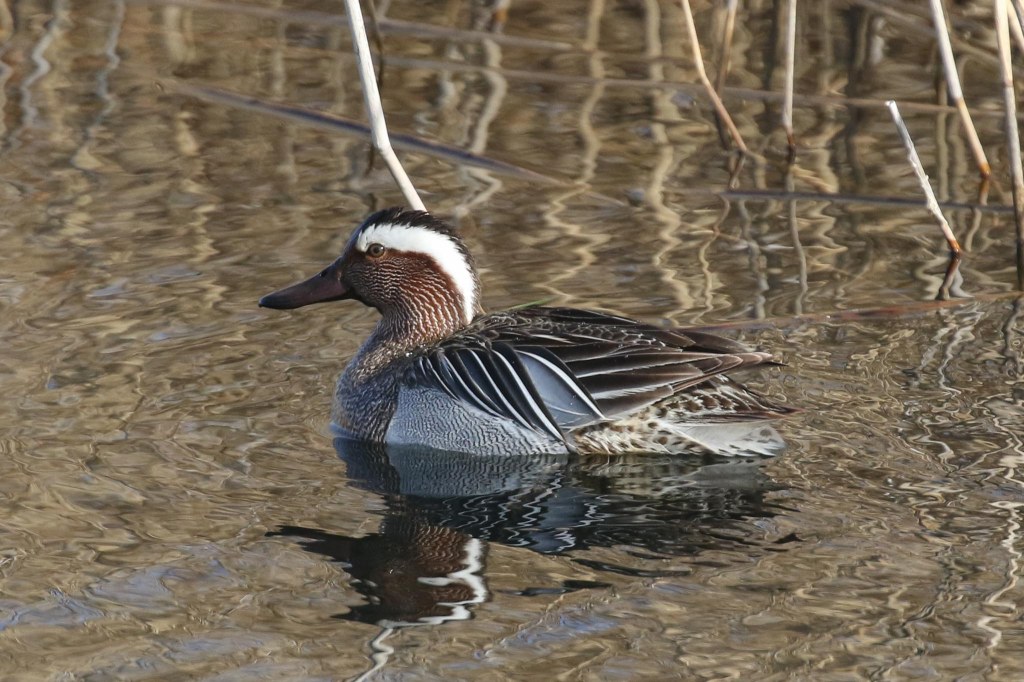
As we finally walked on up East Bank, there were Lapwings and Redshanks displaying out over the grazing marshes. More Avocets were out at the back, on Pope’s Pool, along with a couple of Cormorants and a Great Black-backed Gull. A smart rusty Black-tailed Godwit, already well-advanced in moult to breeding plumage, was feeding on the back of the Serpentine, along with some still greyer birds.
We heard Bearded Tits calling out over the reedbed and had fleeting views of one or two as they zoomed over the tops of the reeds, but they weren’t perching up for us today. The Reed Buntings were more obliging.
Arnold’s Marsh held a nice selection of waders – there were lots of Dunlin and Redshank and several Curlew dotted about. A couple of Ringed Plover and Turnstone were picking about on the shingle islands and a lone Grey Plover was lurking behind a small plant. A single Knot on the mud at the back gave itself away feeding next to a smaller, less rotund Dunlin.
A lone Mediterranean Gull was out on the brackish pool opposite, among the more numerous Black-headed Gulls. Through the scope, we could see its black hood and contrasting white eye-liner and heavier deep-red bill. A Curlew was feeding in the shallows right in front of us, just below the path.

We had a quick look out at the sea – it would be rude not to, when we were so close. There were a couple of Meadow Pipits on the shingle as we approached, and lots of gulls feeding just offshore looking away to the west, but nothing moving further out today. We set off back.
There were a couple of Marsh Harriers out over Pope’s reedbed and we picked up a Red Kite flying purposefully towards us. It came right overhead and we watched it head straight on west over the reedbed. We thought it might be a migrant, which we often get on sunny days at this time of year, but it turned and dropped down towards the scrapes and they next thing we knew it was coming back over the reeds towards us.

We made our way back to the Visitor Centre and went in to pay for our permits and use the facilities. Afterwards, we decided to head on west.
It might be spring, but we are still blessed with some lingering scarce winter visitors. The Red-breasted Goose which has spent the last couple of months with the Brent Geese here was reported again this morning at Blakeney, so we decided to call in to try to see it. As we walked past the quay, we could see a small crowd on the bank beyond so we walked over to join them. Unfortunately, there was no further sign of the Red-breasted Goose – we scanned through the few remaining Brent Geese just in case. A Spoonbill was feeding out on the saltmarsh, by way of recompense.
We watched some Brent Geese flying across the harbour in the distance and they seemed to drop down further out, so we figured it might be worth walking out along the bank from the quay and trying our luck there. We stopped a couple of times to scan on the way out, but couldn’t see anything so we were starting to think we may be out of luck. Then we heard the Red-breasted Goose calling from somewhere out in the harbour, in the distance.
We carried on out, suitably emboldened, and met a birder coming back the other way. He hadn’t seen the Red-breasted Goose but it turned out he was an old friend, one-time assistant warden at Cley back in the day, who we hadn’t seen for god knows how long – 30+ years? We stopped to say hello and while we were doing so, turned to scan out across the harbour. Fortuitously from this angle, we could see the Red-breasted Goose, out on the edge of the saltmarsh with the Brent Geese. Not great for photography, with a bit of heat haze now, but good views through the scopes.
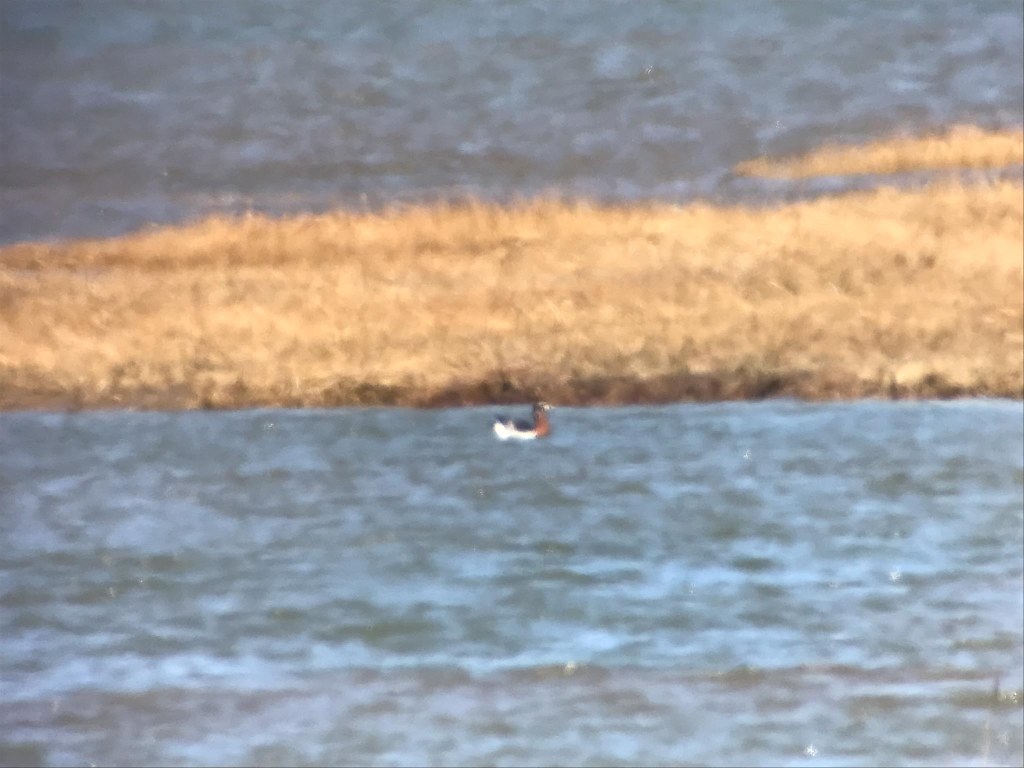
We said our goodbyes and walked back. We called in at Stiffkey Fen next. There has been a Dusky Warbler here for the last week or so, but like all good Dusky Warblers it can be very elusive. As we walked out along the path, there were several people looking but it obviously hadn’t been seen or heard from for some time. We did have nice views of a female Blackcap in the sallows by the path.
We walked on down to the end of the path and up onto the seawall. A Greenshank was feeding in the channel just beyond, but flew a short distance further up as we emerged up onto the bank. We had a nice view of it next to a Redshank now, and then a second Greenshank appeared with it, this one more advanced in its moult to breeding plumage. Another Spoonbill was out on the Fen.
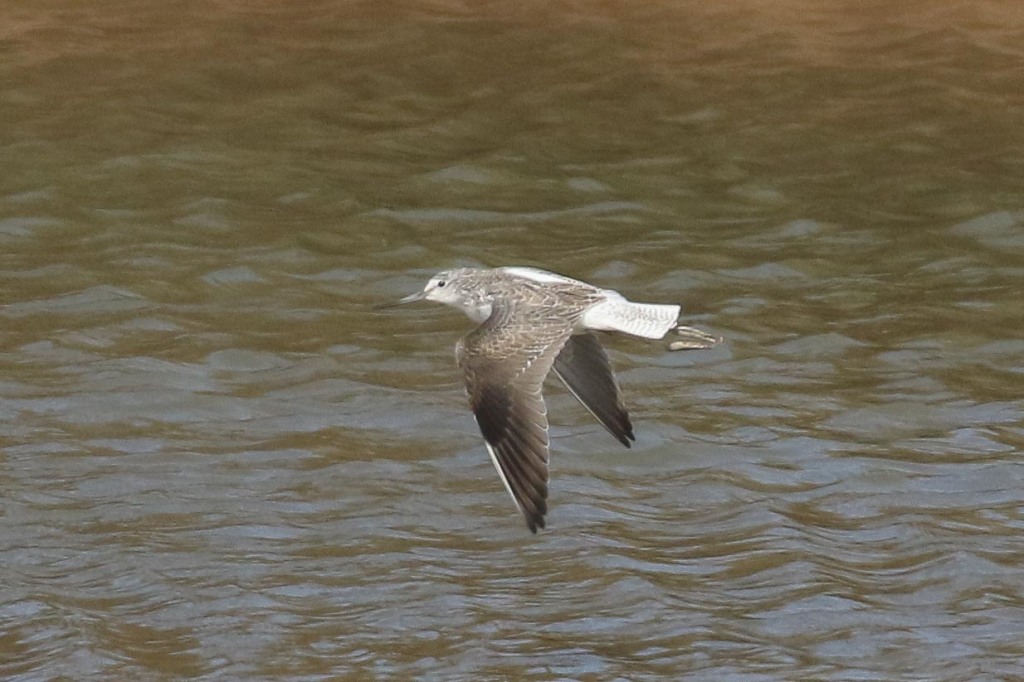
We made our way back, and the other people confirmed there was still no sign of the Dusky Warbler. As we were leaving, a hirundine flew in towards the Fen – a Sand Martin, our first of the year. It was already lunchtime so we made our way back to the minibus for a late lunch in the sunshine. Afterwards, we continued on west to Holkham.
The number of birds by Lady Anne’s Drive has dropped as the winter birds have moved off, but there was still lots to see. There was still a nice selection of ducks and we found about a dozen lingering Pink-footed Geese with the Brents out on the grazing marshes.
There were waders here too – Lapwings, Redshanks, a few Curlew and one or two Oystercatcher, and a few Common Snipe. A Great White Egret flew out of the ditch at the back, and then flushed a second Great White Egret nearby. The latter flew off, right over our heads and off to the west.
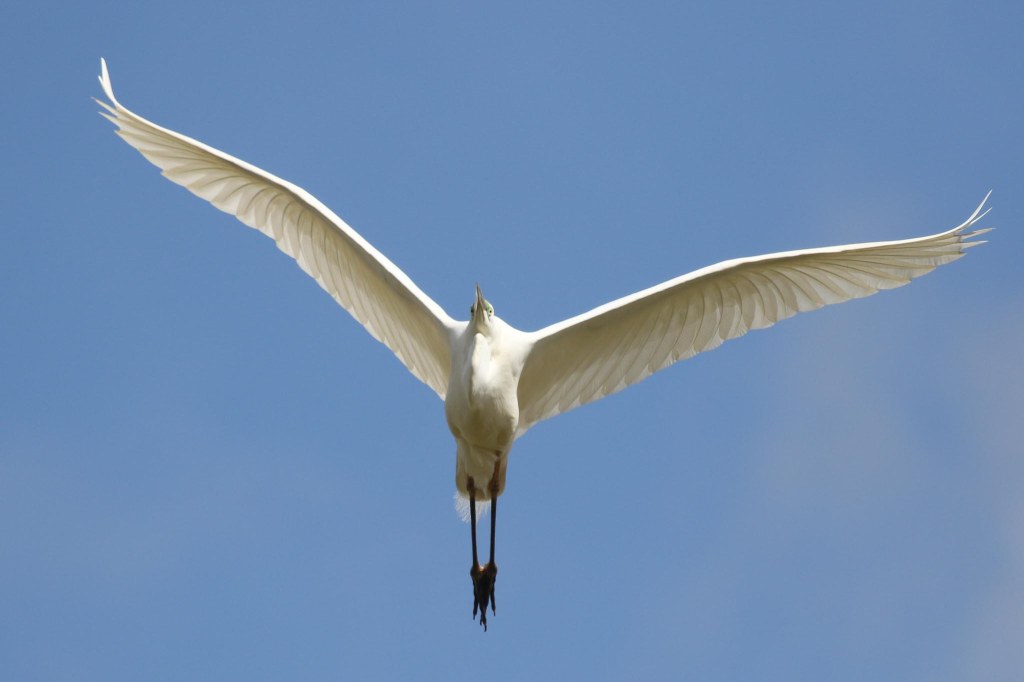
The Shorelarks have been with us at Holkham all winter, but normally depart by the end of March. Ths year there had still been one reported here the last couple of days, so we hoped to catch up with it now. As we walked out towards the cordon, there were a few Meadow Pipits and Skylarks out on the saltmarsh and when we got out to the cordon, there was no one looking. We stopped and scanned, but couldn’t find anything at first.
Then from a little further along, we picked up the lone Shorelark out in the middle. We got it in the scopes and had a good look, admiring its yellow face and black mask. It didn’t look particularly settled, running around and looking, not feeding. It was over towards the back of the cordon and we were just about to walk round to the other side to try for a closer look when it flew. We watched it disappear off into the distance. How lucky we were – 10 minutes later and we would have missed it!
We had a quick look out at the sea now. There were a few Common Scoter offshore and a lone Sandwich Tern flew past some way out. But it was colder here, with the breeze coming in off the sea, so we didn’t linger. As we got back to The Lookout, we had a stop to use the facilites and a young Peregrine drifted over to the west.
We still had a little time to play with, so we called in at the pool at Wells. There were lots of Brown Hares in the field beyond the car park, but despite a bit of chasing they didn’t work themselves up enough to get boxing. There were several Common Snipe hiding in the vegetation around the pools. A couple of Mediterranean Gulls flew overhead, calling.
The real highlight here were the breeding waders. We watched a male Redshank display flighting, fluttering up calling. The Lapwings were getting into the spirit too, flying back and forth, singing and tumbling. This site is all about the waders, so hopefully they will have a good breeding season.

As we turned to head back, a Swallow came in and flew off west over the pools. Our first of the spring – just the one may not make it summer, but hopefully it suggests there may be more spring migrants to come over the coming days.
It was time for us to head for home. What a great day it had been, and how lucky we had been with the weather today.
















